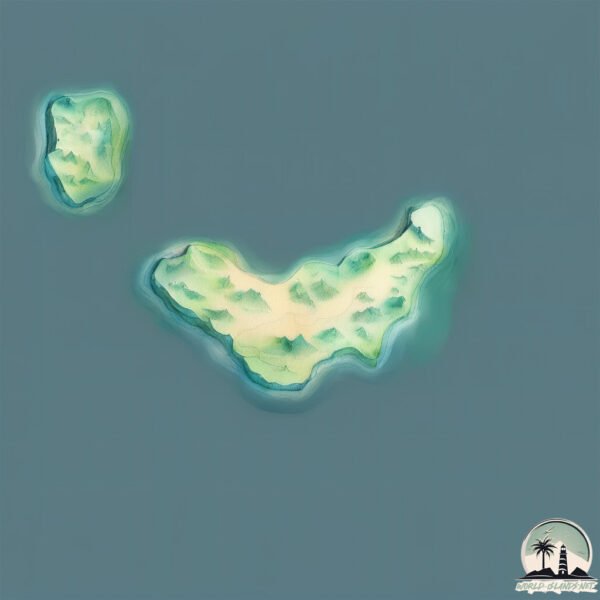Welcome to Cull , a Temperate island in the Great Australian Bight, part of the majestic Indian Ocean. This guide offers a comprehensive overview of what makes Cull unique – from its geography and climate to its population, infrastructure, and beyond. Dive into the details:
Geography and size of Cull
Size: 0.539 km²Coastline: 4 kmOcean: Indian OceanSea: Great Australian BightContinent: Oceania
Cull is a Tiny Island spanning 0.539 km² with a coastline of 4 km.
Archipel: –
Tectonic Plate: Australia – A major tectonic plate covering Australia, New Zealand, and parts of the Indian and Pacific Oceans, known for its relative stability and occasional seismic activity.
The geographic heart of the island is pinpointed at these coordinates:
Climate and weather of Cull
Climate Zone: TemperateClimate Details: Warm-Summer Mediterranean ClimateTemperature: Warm Summer
Climate Characteristics: Characterized by warm, dry summers and mild, wet winters, typical of coastal areas with abundant sunshine Rain is more common in the winter months, maintaining a moderate climate.
Topography and nature of Cull
Timezone: UTC+08:00Timezone places: Australia/PerthMax. Elevation: 19 m Mean Elevation: 10 mVegetation: Herbaceous CoverTree Coverage: 0%
The mean elevation is 10 m. The highest elevation on the island reaches approximately 19 meters above sea level. The island is characterized by Plains: Flat, low-lying lands characterized by a maximum elevation of up to 200 meters. On islands, plains are typically coastal lowlands or central flat areas.
Dominating Vegetation: Herbaceous Cover
Vegetation: 1 vegetation zones – Minimal Diversity Island
Infrastructure and Travelling to Cull
Does the island have a public airport? no .
Does the island have a major port? no .
The mean population of Cull is 0 per km². Cull is Uninhabited. The island belongs to Australia .
Continuing your journey, Garden is the next notable island, situated merely km away.
Australia: Great white shark kills diver at Cull Island
Authorities are still looking for the victim's body after the second fatal shark attack near Esperance in three years. A diver has been ...
Australia: Great white shark kills diver at Cull Island
Authorities are still looking for the victim's body after the second ...
Authorities are still looking for the victim's body after the second fatal shark attack near Esperance in three years. A diver has been ...
Australia: Great white shark kills diver at Cull Island
Thanks for watching my video. If you like my videos, please subscribe ...
Thanks for watching my video. If you like my videos, please subscribe to the channel to receive the latest videos Videos can use ...
A Guide To Island Hopping in Scotland
Island hopping is a great way to experience the offshore gems and ...
Island hopping is a great way to experience the offshore gems and secret spots that Scotland has to offer – whether you have a ...
Australia is classified as Developed region: nonG7: Developed economies outside of the Group of Seven, characterized by high income and advanced economic structures. The level of income is High income: OECD.
News – Latest Updates and Headlines from Cull
Stay informed with the most recent news and important headlines from Cull. Here’s a roundup of the latest developments.
Loading...
Please note: The data used here has been primarily extracted from satellite readings. Deviations from exact values may occur, particularly regarding the height of elevations and population density. Land area and coastline measurements refer to average values at mean high tide.

